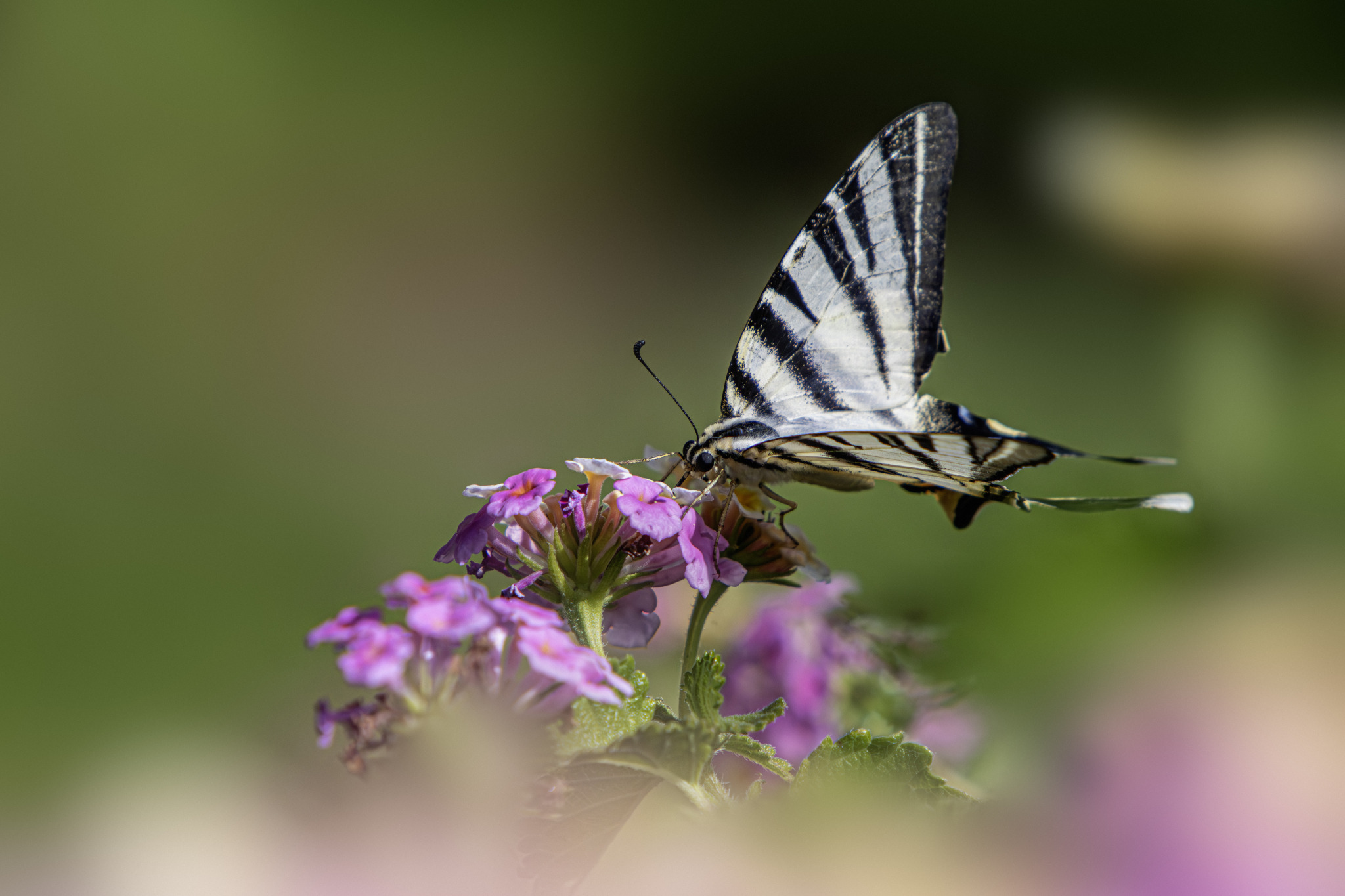The Scarce Swallowtail (Iphiclides podalirius) is a strikingly beautiful butterfly belonging to the family Papilionidae. Known for its large size, elegant tail-like extensions, and distinctive black stripes on pale wings, it is one of Europe’s most iconic butterflies. Despite its name, the Scarce Swallowtail is locally abundant in suitable habitats.
Physical Description
- Size:
- Wingspan: 60–90 mm, making it one of the larger European butterflies.
- Coloration:
- Forewings: Creamy-white to pale yellow with bold, black tiger-like stripes.
- Hindwings: Lighter with a central blue band and orange eyespots near the tail.
- The hindwings have long, pointed extensions resembling a swallow’s tail.
- Sexual Dimorphism:
- Minimal differences between males and females.
Behavior
- Flight:
- Graceful and powerful, often gliding between nectar sources.
- Activity Period:
- Flies from April to September, with one or two broods per year depending on the climate.
- Feeding:
- Adults feed on nectar from flowers like thistles, lavender, and wild garlic.
Habitat
- Found in warm, open areas, such as:
- Orchards and vineyards.
- Hillsides and scrublands.
- Woodland edges and meadows.
- Prefers habitats with abundant flowering plants and nearby host plants for larvae.
Life Cycle
- Eggs:
- Laid singly on the leaves of host plants, primarily wild or cultivated Prunus species (e.g., blackthorn, cherry, almond).
- Larvae:
- Green with yellow and black spots, blending well with the leaves they feed on.
- The caterpillar grows rapidly before pupating.
- Pupae:
- Green or brown, camouflaged against leaves or bark; overwintering may occur in this stage.
- Adults:
- Emergence is synchronized with warmer weather to ensure mating opportunities.
Distribution
- Found throughout southern and central Europe, parts of North Africa, the Middle East, and into Central Asia.
- Prefers lowlands and foothills but can be seen in mountainous regions up to 1,500 meters.
Conservation Status
- Classified as Least Concern, but populations can be fragmented due to habitat loss and agricultural intensification.
- Sensitive to pesticide use and removal of host plants.
Ecological Role
- Pollination: Adults contribute to the pollination of wildflowers and crops.
- Food Web Contribution: Larvae and adults serve as prey for birds, reptiles, and other predators.
Interesting Facts
- Mimicry: Its striking coloration and tail-like extensions may help deter predators by mimicking the appearance of a larger, more dangerous creature.
- Name Misleading: Despite being called “scarce,” it is locally abundant in some areas, though populations fluctuate.
- Adaptability: Thrives in a range of habitats but depends on the presence of Prunus species for reproduction.
Summary
The Scarce Swallowtail (Iphiclides podalirius) is a remarkable butterfly, celebrated for its size, beauty, and ecological importance. Efforts to conserve wildflower meadows, orchards, and host plants are essential for its continued survival. Spotting this butterfly gliding gracefully through sunlit landscapes is a delight for nature enthusiasts and a testament to the richness of biodiversity.
Views: 1268
Subscribe to the newsletter:
